From the Fall 2023 issue of the Isa Informer

Building on a Beefmaster legacy
By Isabel Lasater Hernandez, Vice President
A 1994 article in The Cattleman magazine called our dad, Laurie, “the Conservative Keeper of the Flame.” An interesting premise at the time, the term has gained even more significance in the ensuing 30 years as our family has worked tirelessly to expand upon the legacy of our predecessors.
120 Years Ago
In the late 1800s, our great-grandfather Ed C. Lasater began amassing land and cattle in the rugged brush country of South Texas. He helped establish Brooks County and the town of Falfurrias and was one of the first cattlemen in Texas to use Bos Indicus cattle. Eventually he owned 380,000 acres of ranchland, approximately 20,000 registered Hereford cattle and at one point the largest herd of Jersey cattle in the world.
In addition to ranching, he served as president of TSCRA in 1911–1912 and frequently traveled to Washington, DC, to lobby for the beef industry.
Sadly, much of Ed’s business was lost when he died in 1930 and the ranch suffered during the Great Depression.
90 Years Ago
After Ed Lasater’s death, our grandfather Tom Lasater withdrew from Princeton University in 1931 and returned home to the Lasater Ranch in Texas to begin picking up the pieces of the family business.
In 1932, Tom initiated his crossbreeding program that would eventually lead to Beefmasters: He crossed his father’s Brahman herd with the Hereford herd, as well as with Shorthorn cattle Tom had purchased. He then crossed those two F1 herds and quickly discovered that the three-way Brahman/Hereford/Shorthorn composite outperformed the two-way crosses. Tom closed his herd to outside genetics in 1937 and christened his breed of efficient cattle Beefmasters.
A 1956 article in The Farm Quarterly called Tom a “straight-talking, controversial figure in cattle circles with a bagful of off-beat ideas that leave the conventional cattle breeder in a state of shock.” I’d like to think Granddad would have laughed when he read that description. We in the Beefmaster breed know that regardless of public opinion, Tom unapologetically stuck to his (then) unorthodox ideas: ruthless culling, competitive multi-sire breeding, defined breeding seasons, performance testing, weighing calves and, of course, his cornerstone principles, the Six Essentials.
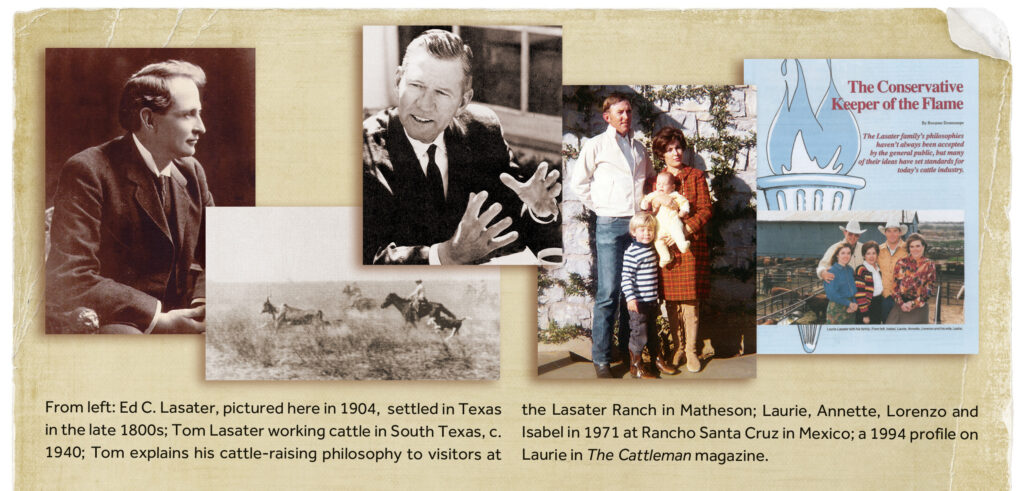
60 Years Ago
While Tom forged a new path in his quest for highly efficient cattle, his oldest son, Laurie, blazed new trails in expanding Beefmasters’ reach. Nearly 60 years ago, our parents, Laurie and Annette, began their Beefmaster career in Mexico with a wedding gift of 35 Beefmaster cows and two bulls from the Foundation herd. Laurie’s dream was to carve out his own niche and establish a market for purebred Beefmaster cattle in Mexico. Today Beefmasters have the highest number of registrations of any beef breed in that country.
In addition to opening new markets, Laurie wrote The Lasater Philosophy of Cattle Raising in 1971. He started writing during a drought when he needed a distraction to occupy his mind. The book, which explains the family’s cattle-raising ideas, still sells 50 years later, and in the book’s preface Laurie calls it the “great accomplishment of my career.”
30 Years Ago
Thirty years ago our family experienced a banner year of celebration and change. In May 1993 we gathered for two graduations and one wedding: I graduated from Vanderbilt University, the next week Lorenzo graduated from TCU Ranch Management School, and a week later he and Leslie married. It was certainly a whirlwind month!
With our newly minted degrees, Lorenzo and I both assumed new roles in the company: I took over the advertising for Mom, and Lorenzo, full of new ideas from Ranch Management, joined as the Vice President of Operations.
During his 30 years, Lorenzo’s role has evolved with his goal of expanding the Beefmaster footprint worldwide. He has traveled to six continents and 15 countries to promote Beefmasters and educate cattlemen around the world. Today, there are L Bar Beefmaster genetics in at least 25 countries.
Tom Lasater remained laser-focused on innovation and improvement throughout his career, and his generation did the tough work of creating and refining Beefmasters into the high-performing animals they are today. Building on those successes, Lorenzo has worked to increase our herd’s uniformity. For the past 20 years, he has streamlined our herd by eliminating the off colors frowned upon by the beef industry and ensuring our customers’ feeder cattle will grade well, all within the demanding focus of the Six Essentials.
Of all his initiatives, Lorenzo is most excited about seeing the Beefmaster breed expand and gain respect worldwide.
Today
Exactly 30 years after Lorenzo and I started at Isa Beefmasters, we are excited to announce another milestone for the company: Lorenzo’s son, Beau, has joined the operation, taking the reins for the fifth generation.
After graduating from TCU, Beau worked at American Airlines and Aldi Grocery Stores, gaining invaluable and diverse corporate experience. He then decided he was ready to return to his childhood roots. The sixth generation is also on the ground in Beau’s and Paige’s children, Jaxon and Ellie.
While we are proud of our family’s 131-year Legacy and Longevity, we are most excited to look to the future with the next generation in place.
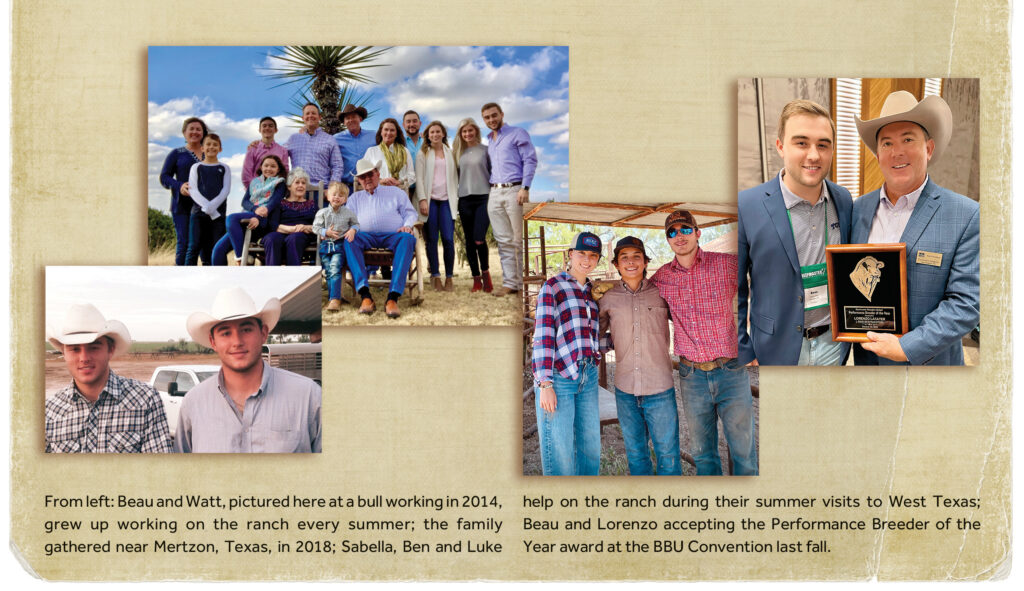
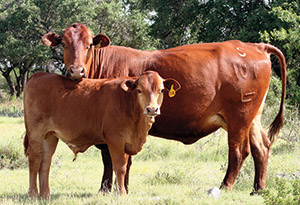

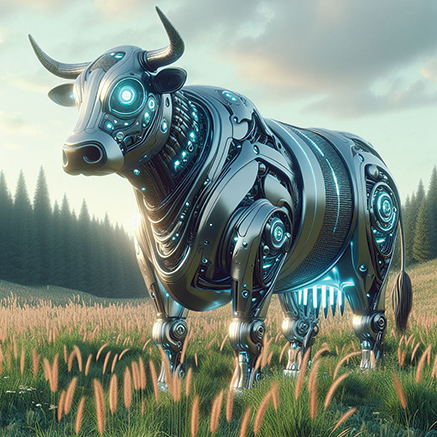 I created this robot cow graphic using A.I. on www.copilot.microsoft.com. I literally said “draw a robot cow” and got this image 12 seconds later.
I created this robot cow graphic using A.I. on www.copilot.microsoft.com. I literally said “draw a robot cow” and got this image 12 seconds later.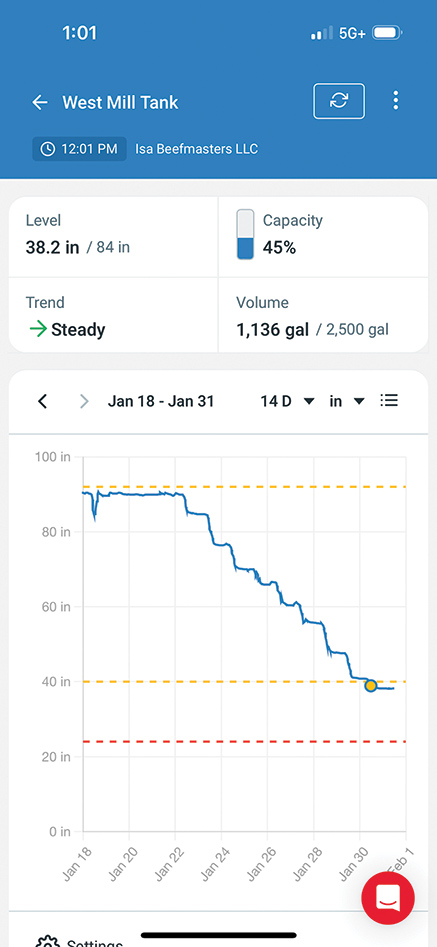 Ranchbot remote water monitoring provides us with real-time readings for our hard-to-reach tanks.
Ranchbot remote water monitoring provides us with real-time readings for our hard-to-reach tanks.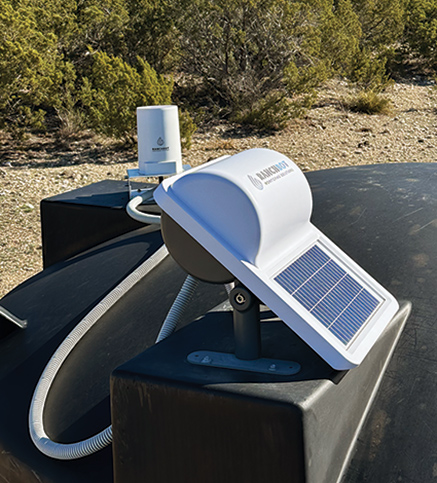



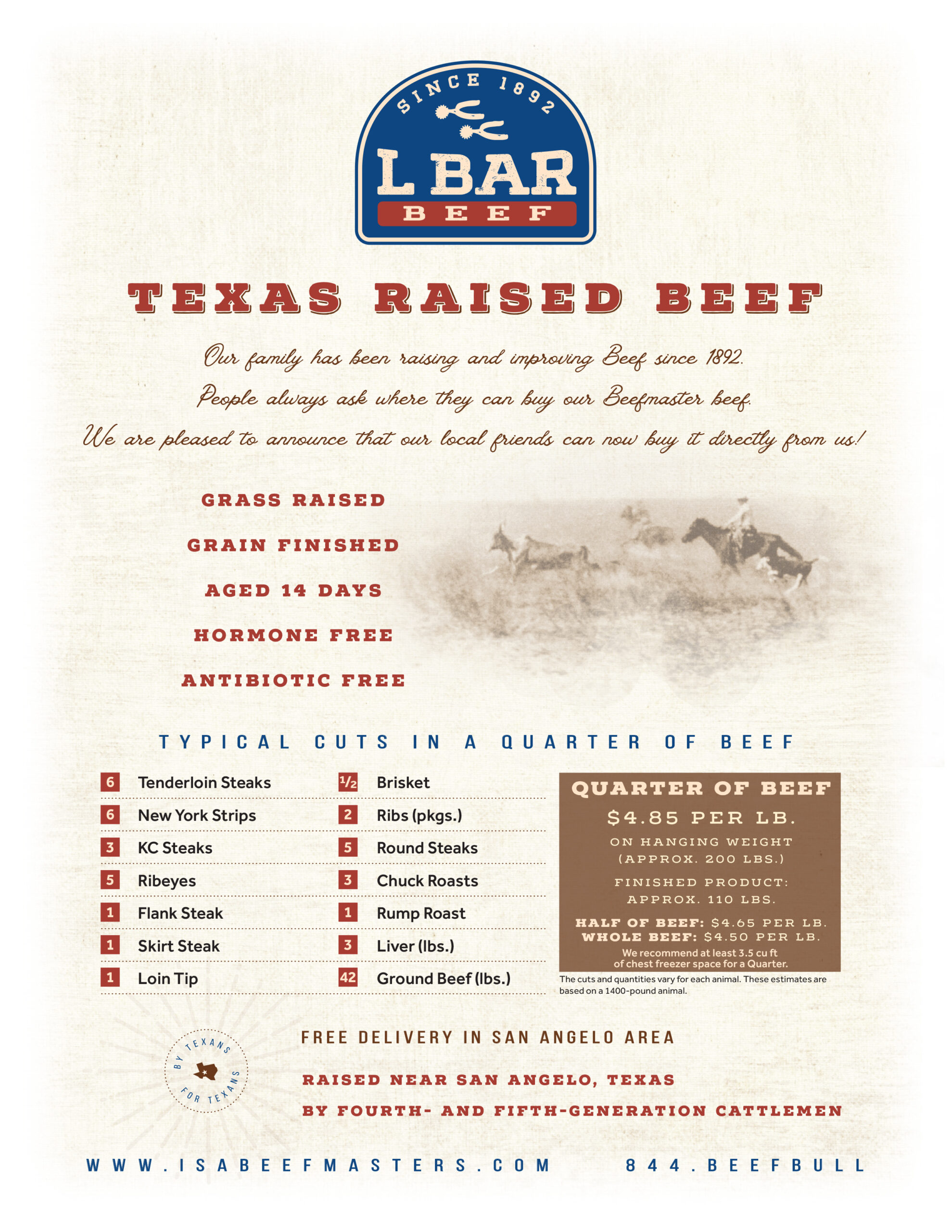
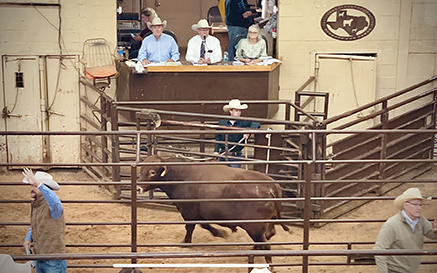 Jose Rodriguez of Mexico bought the 2023 high-selling bull, L Bar 1098.
Jose Rodriguez of Mexico bought the 2023 high-selling bull, L Bar 1098.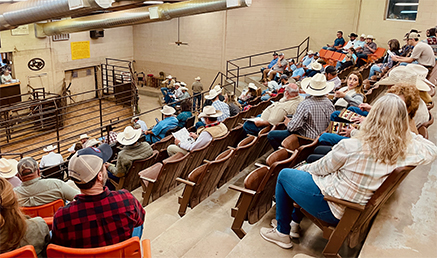
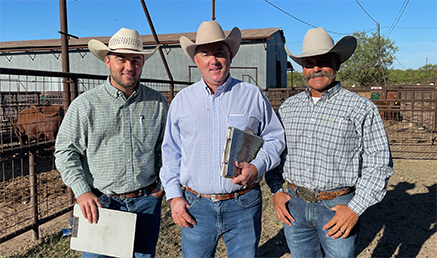 Beau Lasater, Lorenzo Lasater and ranch foreman Todd Bannert
Beau Lasater, Lorenzo Lasater and ranch foreman Todd Bannert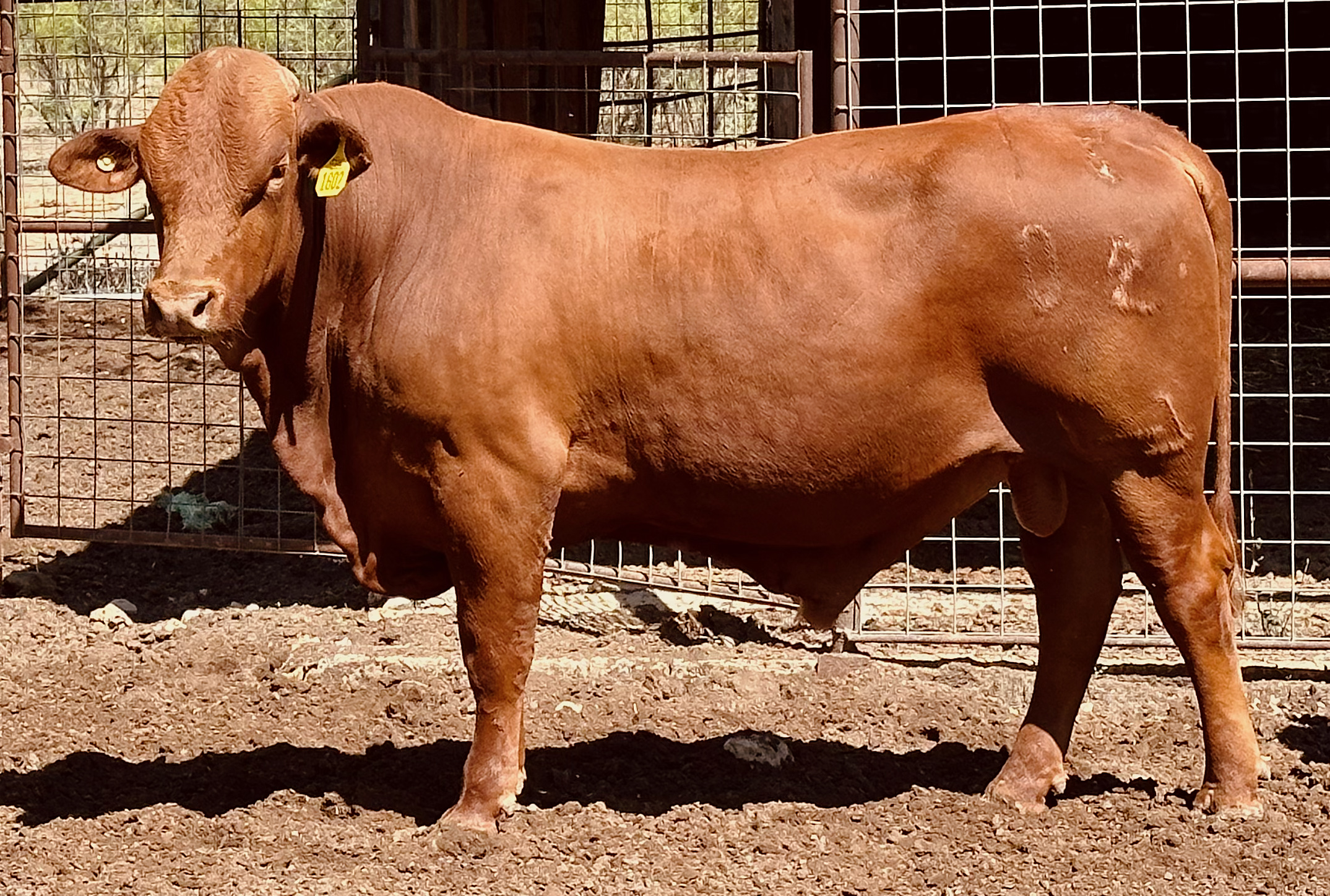
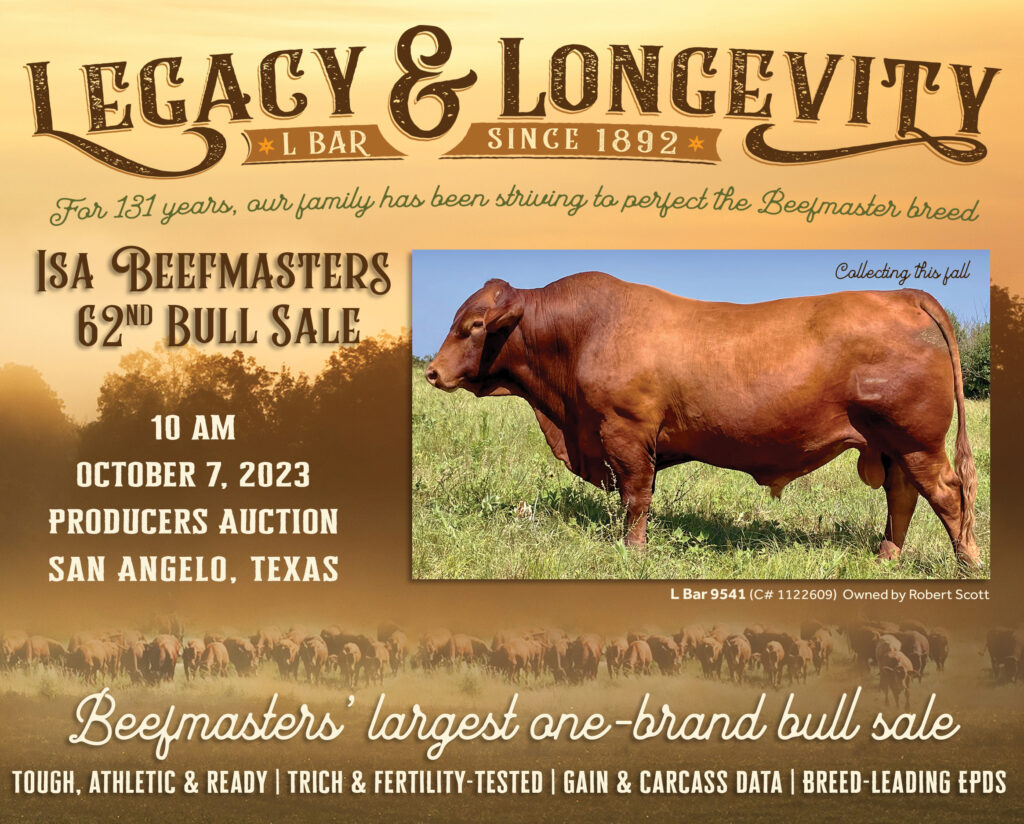
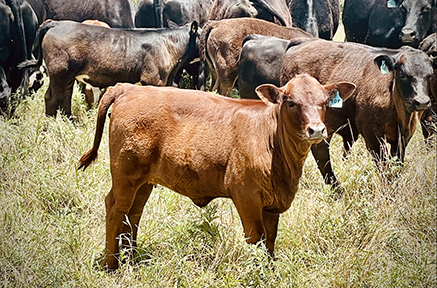 This Beefmaster x Angus cross heifer is part of a study at the Noble Research Institute in Ardmore, Oklahoma.
This Beefmaster x Angus cross heifer is part of a study at the Noble Research Institute in Ardmore, Oklahoma.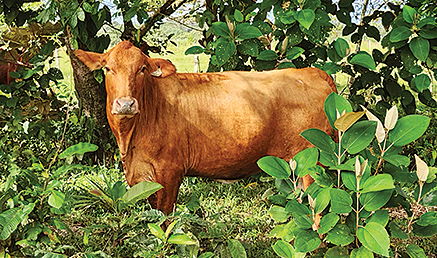 A Beefmaster-cross cow in Panama.
A Beefmaster-cross cow in Panama.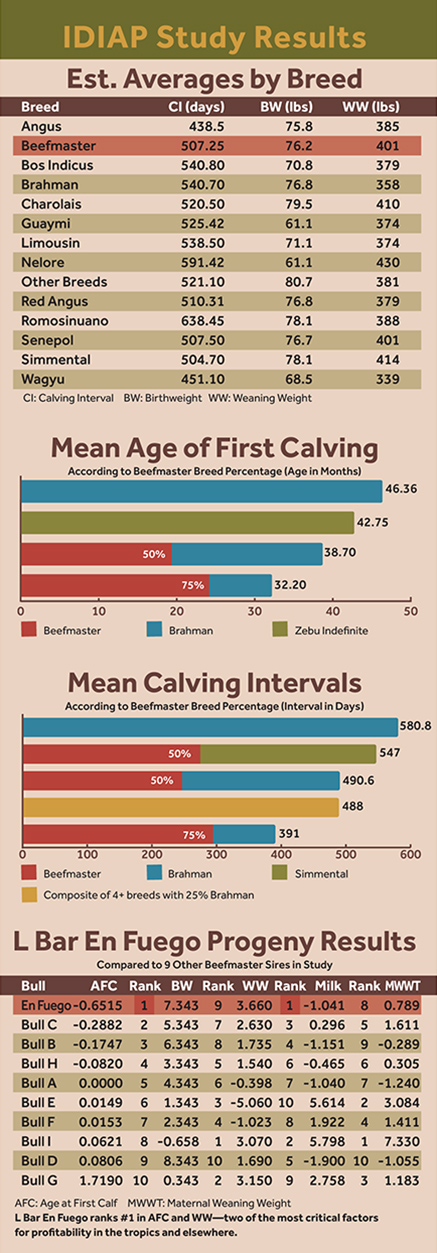
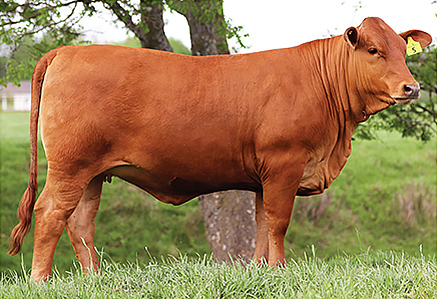 Thisbeautiful A.I. daughter of L Bar Momentum recently sold for a premium at the Red River Performance Group Heifer Sale.
Thisbeautiful A.I. daughter of L Bar Momentum recently sold for a premium at the Red River Performance Group Heifer Sale. LBarMomentum brings extremely balanced EPD power to his progeny. A.I. allows any-sized operator to harness the same genetic power that large seedstock producers use.
LBarMomentum brings extremely balanced EPD power to his progeny. A.I. allows any-sized operator to harness the same genetic power that large seedstock producers use.
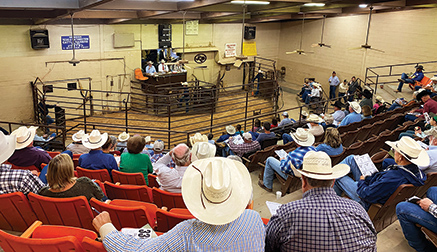 Bullbuyers recognize the value of A.I.-sired bulls and are willing to pay more to gain the genetic insights and predictability that A.I. offers.
Bullbuyers recognize the value of A.I.-sired bulls and are willing to pay more to gain the genetic insights and predictability that A.I. offers.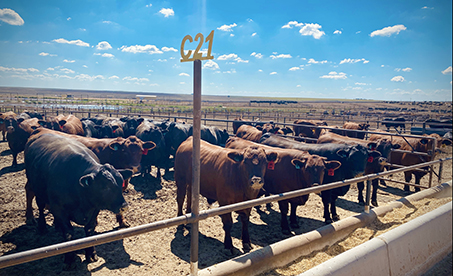 Steers at Nextgen Cattle Feeding, KS.
Steers at Nextgen Cattle Feeding, KS.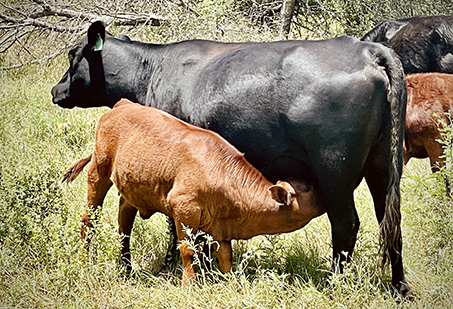

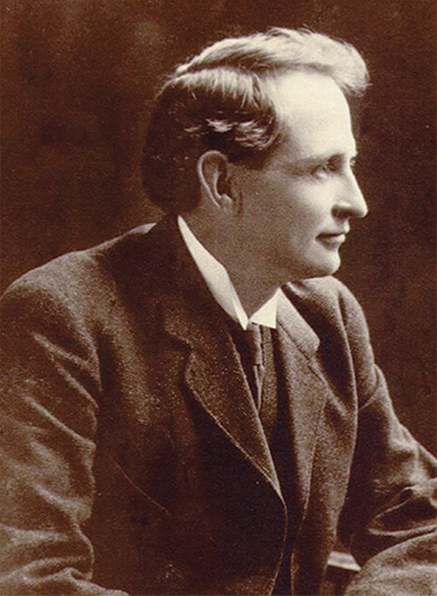 Ed C. Lasater first registered the L Bar brand in 1892 in South Texas.
Ed C. Lasater first registered the L Bar brand in 1892 in South Texas.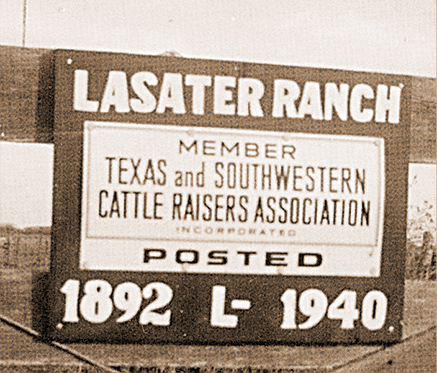 The Lasater ranch sign near Falfurrias, Texas.
The Lasater ranch sign near Falfurrias, Texas.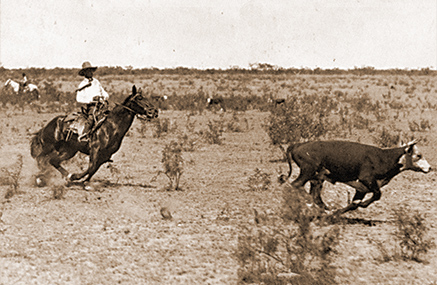 Tom Lasater, youngest son of Ed C. Lasater, returned home after his father’s death in 1930 to try to save the family ranch and cattle.
Tom Lasater, youngest son of Ed C. Lasater, returned home after his father’s death in 1930 to try to save the family ranch and cattle.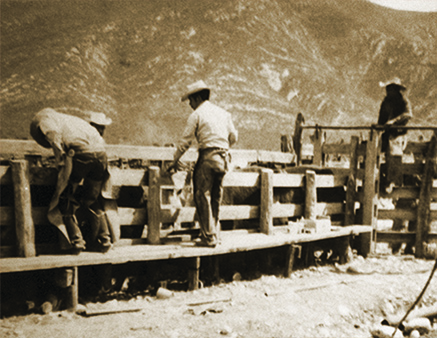 Laurie (far left) vaccinates cattle on Rancho Santa Cruz near Múzquiz, Coahuila, Mexico. c. 1967
Laurie (far left) vaccinates cattle on Rancho Santa Cruz near Múzquiz, Coahuila, Mexico. c. 1967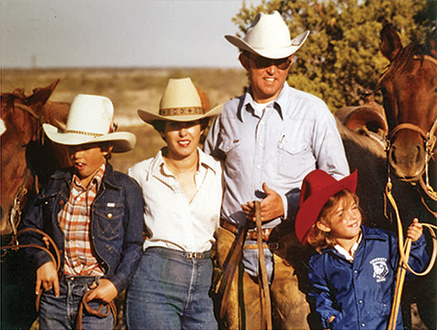 Lorenzo, Annette, Laurie and Isabel after a roundup near Mertzon, Texas. c. 1978
Lorenzo, Annette, Laurie and Isabel after a roundup near Mertzon, Texas. c. 1978 Laurie (left) and Lorenzo Lasater (right) with Danny Major, who bought the high-selling bull in the sale, L Bar 0501.
Laurie (left) and Lorenzo Lasater (right) with Danny Major, who bought the high-selling bull in the sale, L Bar 0501.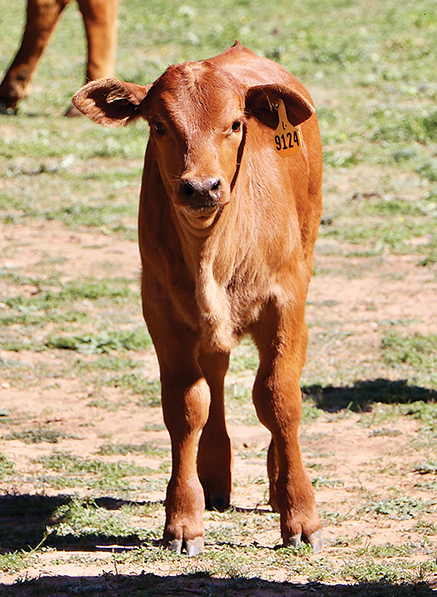 The ripples of a bull’s impact on the herd, whether good or bad, will continue for almost 20 years.
The ripples of a bull’s impact on the herd, whether good or bad, will continue for almost 20 years.
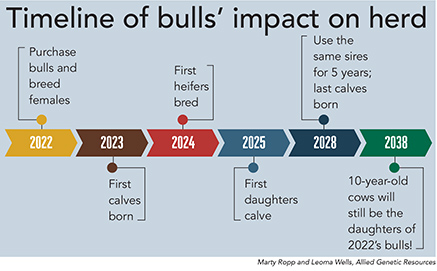
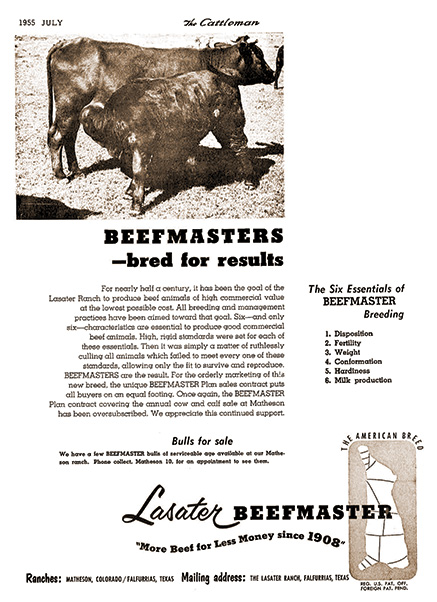 1955 ad from The Cattleman magazine.
1955 ad from The Cattleman magazine.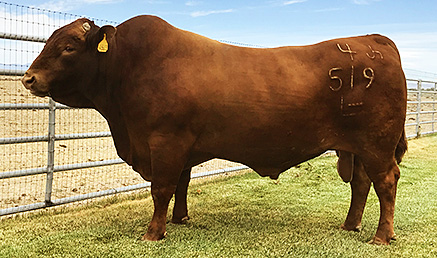 Semenbull L Bar 4519’s dam, L Bar 1417, was a Pacesetter that also raised another herd sire plus two top embryo donors. The value of her genetic impact is immense.
Semenbull L Bar 4519’s dam, L Bar 1417, was a Pacesetter that also raised another herd sire plus two top embryo donors. The value of her genetic impact is immense.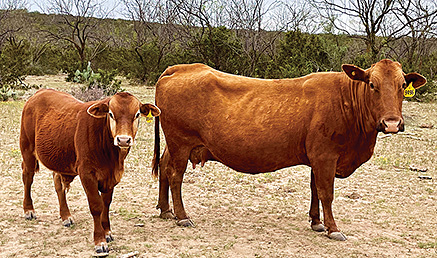 LBar9496, who weaned this outstanding bull as her 10th calf this spring, exemplifies the fertility and longevity honed through years of population genetics.
LBar9496, who weaned this outstanding bull as her 10th calf this spring, exemplifies the fertility and longevity honed through years of population genetics.




 Translate
Translate